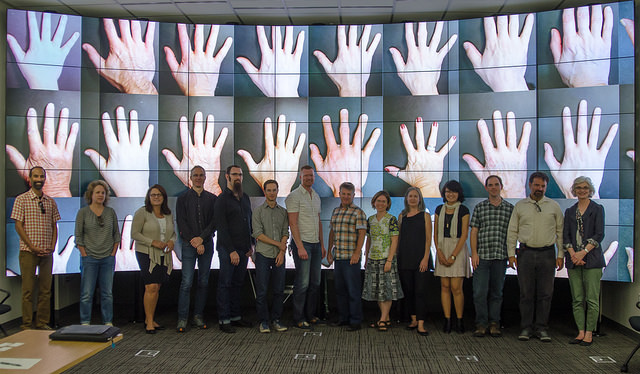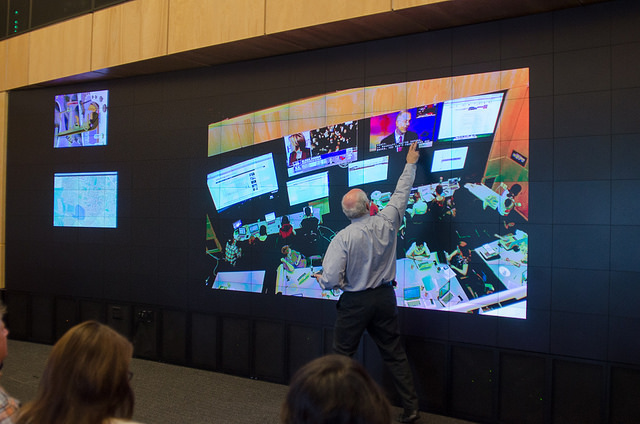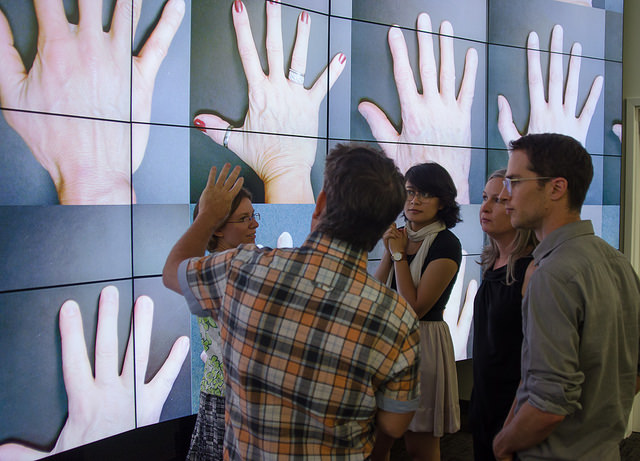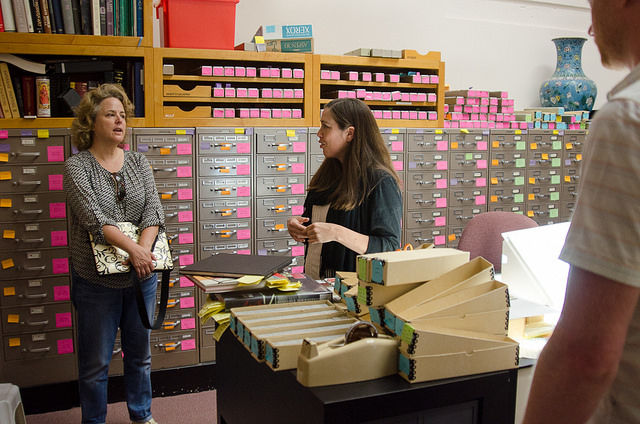In August, several members of Research IT, the Library, and the Visual Resources Center met with our equivalents at Stanford to discuss supporting digital research in the humanities and social sciences met with our equivalents at Stanford. Special thanks to our friends in Stanford’s Academic Technology Specialists program for hosting us, especially Mike Widner, who helped arrange the visit. ATS’s combine specialized disciplinary training and broad experiential knowledge. Though ATS’s report to the library, they spend the majority of their time within their assigned department, program, or center. This differs from Berkeley’s model of supporting digital research in the humanities and social sciences, where technical expertise and services are often housed in IT, the Library, or various labs on campus.

Credit: Art History, UC Berkeley
For those of us working on Digital Humanities @ Berkeley, a visit to the Center for Spatial and Textual Analysis (CESTA) was an excellent opportunity to discuss the collaborative nature of digital projects and how to support them over the research lifecycle. We were treated to a presentation by Mark Algee-Hewitt and Ryan Heuser of Stanford Literary Lab on using text mining to examine changes in poetic meter over time.
Throughout our visit, our hosts highlighted the relationship between digital technology and space in creating new classroom learning experiences and interesting research environments. We began our day in the Learning Theater, which featured a wall of several dozen joined LCD screens and furniture that was easily rearranged and stored. A timelapse of the Learning Theater over a week revealed how modular, remixable space was used to support a diverse set of academic activities.

Demonstrating the Learning Theater used as a journalism class’ 2012 elections command center | Credit: Art History, UC Berkeley
The HIVE (HANA Immersive Visualization Environment offered 35 high-resolution LCD screens paired with robust severs to display of image details, such as photographs, 3D captures of statues, and animated 3D aeronautical engineering models.

Credit: Art History, UC Berkeley
Later in the afternoon, we split up. Some of us visited Social Science Data and Software (SDSS), which plays an equivalent role to the Doe Library Data Lab in supporting the acquisition, curation, and preservation of data. We discussed the common problems of provisioning licensed software at a campus level, dealing with software preservation, research data management, and the difficulties of providing support across a wide variety of devices and operating systems.
Our peers from the VRC and Art History visited Stanford’s Visual Resources Center in the Art and Architecture Library and discussed their roles in image digitization, stewarding a collection of digital images, and working with faculty to curate image sets for course instruction. Afterwards, we met with Digital Library Systems and Services, where we discussed digital collections, preservation, and compared Digital Asset Management Systems.
This visit to Stanford gave us a new perspective on the role of flexible technology-enhanced spaces in the development of programs and communities. These issues certainly merit further discussion at Berkeley as we consider directions for our own digital humanities program.

Visiting the Visual Resources Center
Credit: Art History, UC Berkeley